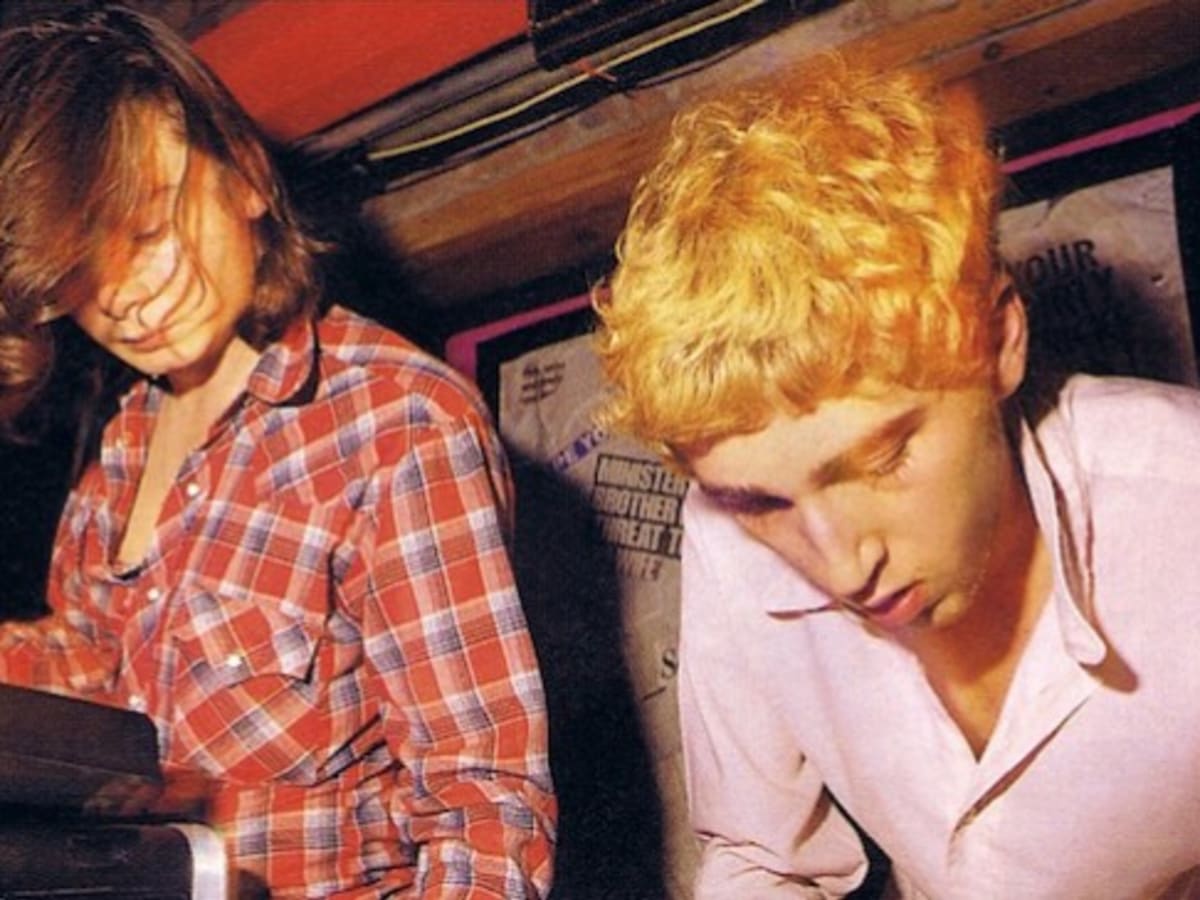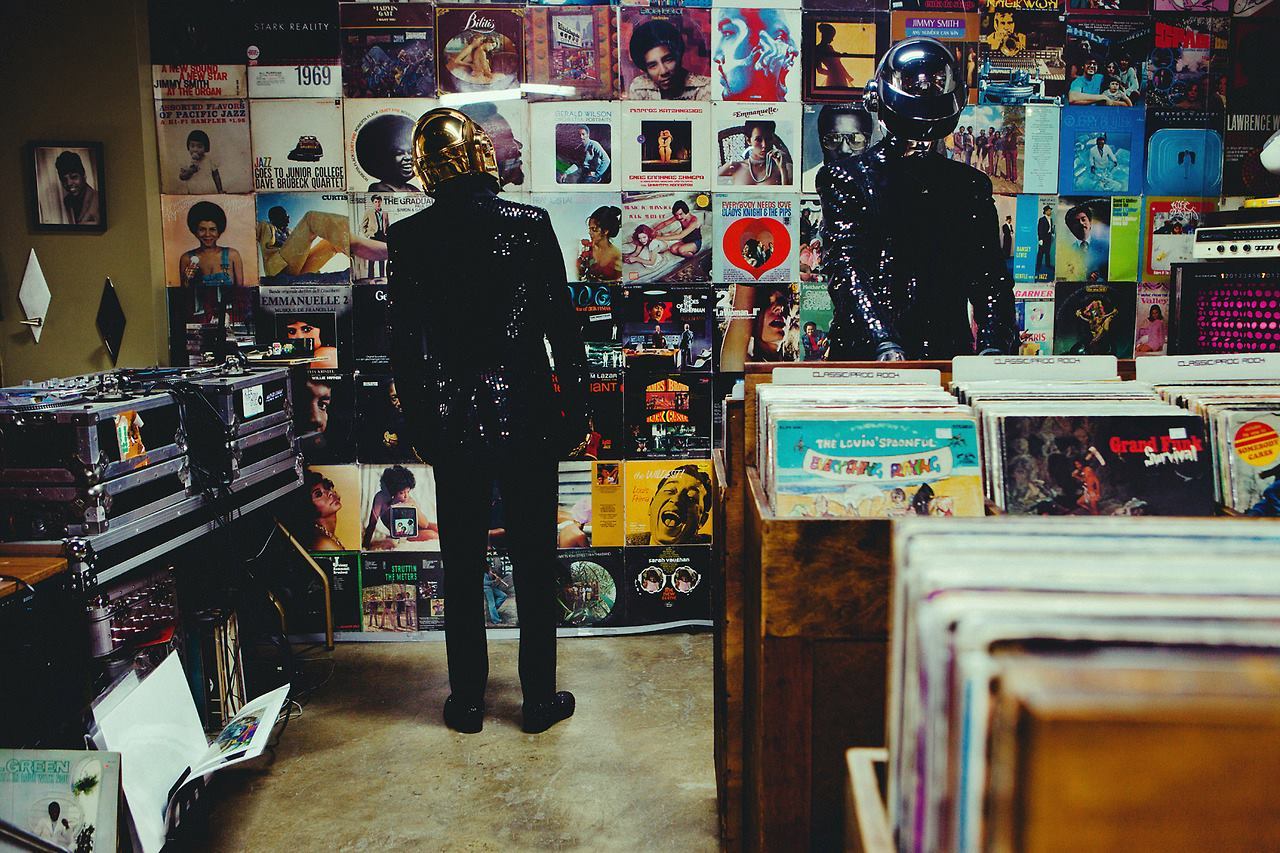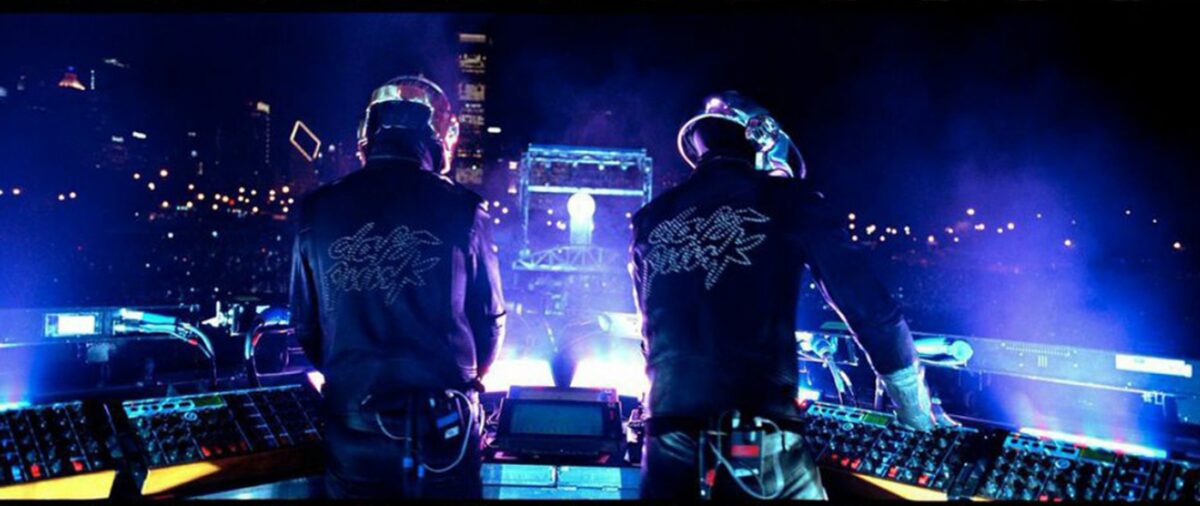Last week marked the twentieth anniversary of Discovery’s release, and a month prior, the iconic French electronic duo Daft Punk announced their break up after 28 years via a video titled “Epilogue” uploaded to their YouTube page. After nearly eight years of silence from the band (their last effort being 2013’s Random Access Memories), the announcement didn’t come as a surprise to many. To some, it was a satisfying sigh of relief after holding their breath for so long. And to others, it was like losing a loved one. Daft Punk was a one of a kind band, or studio project, or collaboration, whatever you wanted to call it, but they operated in the same manner as a band – taking their influences and assigning them their own definitions. That’s what kept Daft Punk relevant all these years: their relationship with cool.
Their relationship with “cool” goes back to the early 90s in Paris, where Thomas Bangalter and Guy-Manuel de Homem-Christo started Darlin’, a punk band inspired by the Beach Boys song of the same name (in which they actually performed a punk version of the song) with their friend Laurent Brancowitz. And, of course, you know that the rest of their origin story is the stuff of folklore: after two performances and a single released, a Melody Maker review criticized Darlin’ for sounding like “Daft Punk-y thrash.” Needless to say, the band split. While Brancowitz left to eventually become the guitarist for Phoenix, Thomas and Guy-Man began experimenting with electronics and synthesizers and DJ equipment, eventually learning how to synthesize their punk and heavy metal influences into something more modern and digestible.
What followed was a sprint around the nightlife of Paris, as they DJ’d at various gay clubs, produced music from their bedrooms, to eventually releasing their debut single “The New Wave” on Soma Records. With the release of their debut album Homework (named after having produced most of it in their homes), they began their ascension into rejuvenating 80s French house music. They rose through the Parisian clubs, eventually bringing their show to the U.S. in what would become the Daftendirektour, a tour lasting throughout 1997 at clubs around the world.

Shortly after, they returned to the studio to begin working on what would become their pop-electronica album, Discovery. Despite having mostly been written in the late 90s, when the album was released three years later, it was already the sound of 2000/2001. It set a precedent of what was to come in the early 2000s. Gone were the deep, low-end throbs of heavy house music, replaced by fun, catchy, funk and pop-inspired songs that brought to mind the days of disco. But what was also introduced in this era were the robot suits and helmets, inspired by Brian De Palma’s ’70’s cult classic Phantom of the Paradise (a film the band claimed to have seen at least 15 times in theaters.) The reason for the suits in the movie ran parallel to the reasons the band adopted them: it’s not merely to conceal identity, but a staunch indication of signature and auteurship.
But they also wanted to take out the attention factor in their live music. The band didn’t reveal their suits publicly until their 2006 Coachella show, mostly using them as a promotional tool up until that point, but when they did they were right – the masks took the focus off of the band and casted the excitement onto the crowd themselves. They were not the show, but you, the audience, was the show. And that’s not the only thing that was introduced: the now famous pyramid stage that has been sealed into legendary status also made its debut. There’s a reason why that tour was so monumental. It was 1) the greatest light show ever seen on Earth up to that point, 2) proved that electronic music was the rapid rising force its fans made it out to be, and 3) cemented how we now view the band: masters who have absolute control over what they do. And the pyramid proved to be an iconic choice – it’s a figure that goes back thousands of years and is a representation of power. People would bow down and pray to these structures, much like the spell the band had over its audience.
It was a tour that not only changed live electronic music, but live music at large. It was the first show of its kind to emphasize the meaningless of human existence, but the sheer power of human ingenuity. Do you ever wonder what makes concerts so memorable? The kind that decades from now teenagers will be buying replica vintage tour t-shirts of from Target? Like they do today with Zeppelin, Maiden, and Slayer? Daft Punk knows. And soon many artists after, not just electronic artists, followed suit in capitalizing on the live experience.

This eventually culminated into the Grammy winning album Alive 2007, leading them to the next project they’ve always wanted to tackle – movie scoring. The revival of Tron was already hype enough upon its announcement, but when Disney announced that the electronic duo would be composing original music for the film, it made sense that Tron would be the perfect outlet for their next venture. The movie didn’t make the impact the studio wanted, but gave Daft Punk another avenue in creating music, perhaps even over-shadowing the film itself.
This, however, caught themselves in a mindset. After returning to the studio to get to work on their next record, they became frustrated by the constraints of composing electronic music, daring to make more formal, lush movements. They wanted to write and produce an album consisting of icons from various musical influences in their lives, from disco to punk to synth pop. No songs had been written yet, only that they knew they wanted to draw a parallel between the brain and the hard drive. So, they started making a list of collaborators with Paul Williams (of Phantom of the Paradise) at the very top, and played him the only thing they had written so far – the melody for what would become “Touch.” The lyrics then came spilling out of Williams. But still, they struggled with the meaning. What does “touch” mean? Is it a robot gaining human feelings? Is it aliens making contact for the first time? Is it someone waking up? Afterward, they gave Williams a book to take inspiration from, a book of short stories about firsthand accounts of near-death experiences. And from there, the answer was clear – “touch” was not some superficial occurrence happening, but a human coming back to life, having seen a side that is indescribable: the regaining of human consciousness, something that robots will never be able to feel.
And from there, the centerpiece of the album was complete. Along came the list of collaborators spanning generations from Niles Rogers and Giorgio Moroder, to Julian Casablancas and Panda Bear, each artist evoking what they brought to music at the time of their peak. The result was a timeless concept album that was about time and memories, at a time where music felt like anything but.

Then came the Grammy win, and then… nothing. Not a peep. Aside from a one-off appearance at the Grammys in 2017 with the Weeknd and an un-released single from the Tron soundtrack, they faded into silence. Were they planning any comeback of some sort? New material? Perhaps… perhaps they were taking their time as family men. We also don’t talk about how Thomas Bangalter is going deaf in one ear, or the rumor that he’s been ghost directing films for uncredited roles.
I guess it sounds like I’m just trying to cram everything I love about Daft Punk into one goodbye letter, but now is the time to do it (that’s what this website’s for, right?) I remember first experiencing Daft Punk: a 7-year old kid who had just moved to the United States sitting in his grandma’s living room in Chicago, when the video for “One More Time” came on Cartoon Network. In the video, you see families in the future all over the world dancing to “One More Time” blaring from their TVs. And I couldn’t imagine the band expected anything less. Since then, I’m sure you associate that song in numerous ways: A pool filled with cotton candy Jelly Belly’s at a 10-year-old’s birthday. A drunk uncle moment at your cousin’s wedding. A dozen cartoon kittens flipping their tails double-time. Winning “The $10,000 Pyramid” and “Jeopardy!” on the same day. Aliens touching down on earth only to give every man, woman, and child their own ghettoblaster. The song sounds like many things. It is not prudent, but it is wise. Because, remember, it’s called “One More Time”. Not “Forever” or “Infinity” or “17 More Times”. This is it. It implies that there is an end. The feelings will wear off. But not before Romanthony gurgles his way into your chest and brain. Not before Daft Punk distill 25 years of pop and house into five and a half minutes of first-time joy. Not before you lose every sense, breath, scream, beg, cry, break, heal, pump, kick, and beam wider than your mouth knows. So keep repeating because you won’t last. “One More Time”, however, will.
Every creative collaboration runs its natural length. And I believe that their break up serves as an acknowledgement that Daft Punk lived a full life. They came way too far to forget who they are. That’s for damn sure.
